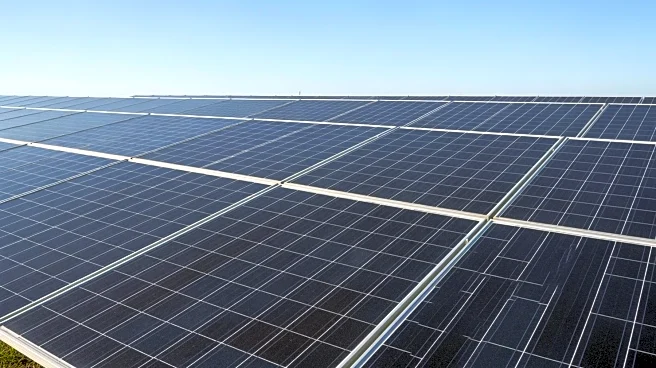What's Happening?
A new hydrogen production plant has been inaugurated in Wensickendorf, Brandenburg, Germany, by the renewable energy company ENERTRAG. This facility is set to produce green hydrogen using solar and wind energy, with an electrolysis capacity of 4 MW. The
plant is expected to produce up to 380 tonnes of green hydrogen annually starting in 2026, with 230 tonnes allocated for the Heidekrautbahn railway line between Barnim and Berlin. This initiative is part of a broader project to establish a climate-friendly value chain for green hydrogen in the transportation sector, involving partnerships with local and scientific institutions. The project is supported by the Federal Ministry of Transport with a funding of approximately 25 million euros under the National Innovation Programme for Hydrogen and Fuel Cell Technology.
Why It's Important?
The development of this hydrogen plant is significant as it represents a shift towards sustainable transportation solutions, reducing reliance on fossil fuels and promoting CO2-free mobility. This project not only supports regional energy transition efforts but also serves as a model for future applications in passenger and commercial transport. The initiative highlights the potential of green hydrogen as a key component in achieving climate goals and enhancing energy security. By fostering collaboration between industry, science, and politics, the project underscores the importance of integrated approaches to sustainable development.
What's Next?
The successful implementation of the hydrogen plant could lead to further investments in similar projects, both within Germany and internationally. As the plant becomes operational, it may inspire other regions to adopt green hydrogen solutions, potentially influencing policy decisions and funding allocations towards sustainable transportation infrastructure. The project's progress will likely be monitored by stakeholders in the energy and transportation sectors, as well as by environmental advocates seeking scalable solutions to climate change.
Beyond the Headlines
The project also raises important considerations about the role of renewable energy in regional development and the potential for green hydrogen to transform traditional industries. It highlights the need for continued innovation and investment in clean energy technologies to meet global climate targets. Additionally, the project may influence public perception and acceptance of hydrogen as a viable alternative to conventional fuels, paving the way for broader societal shifts towards sustainability.















